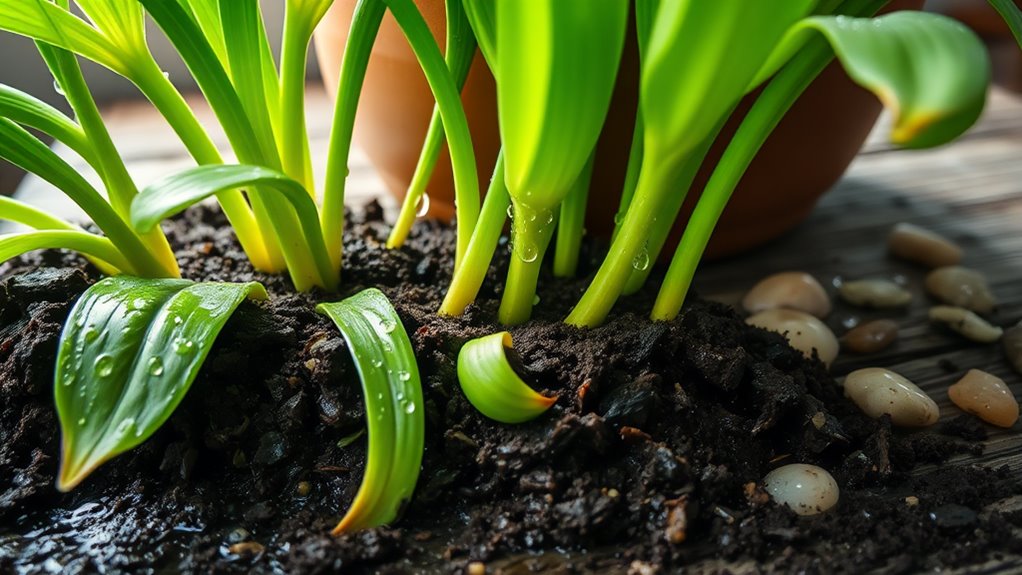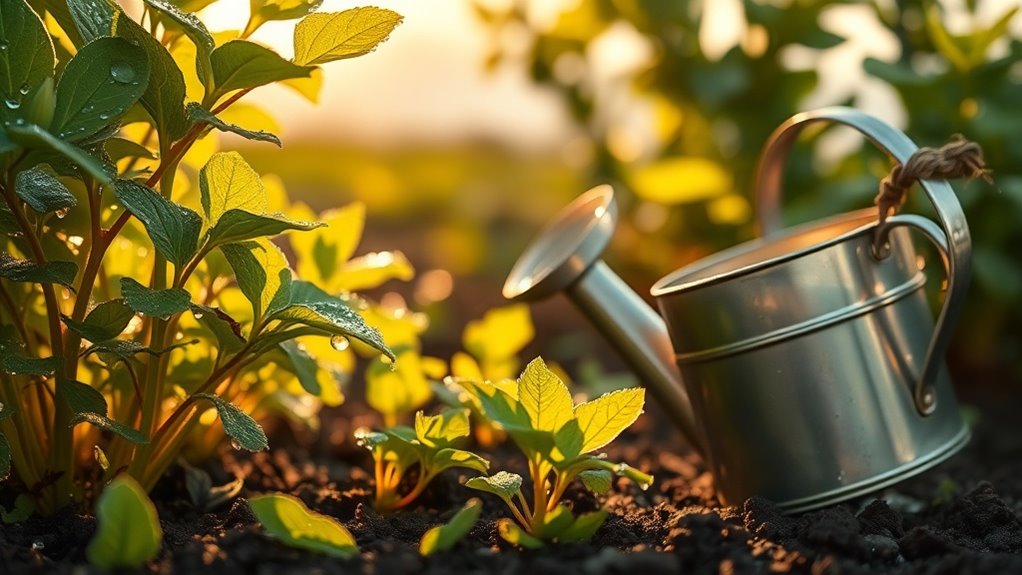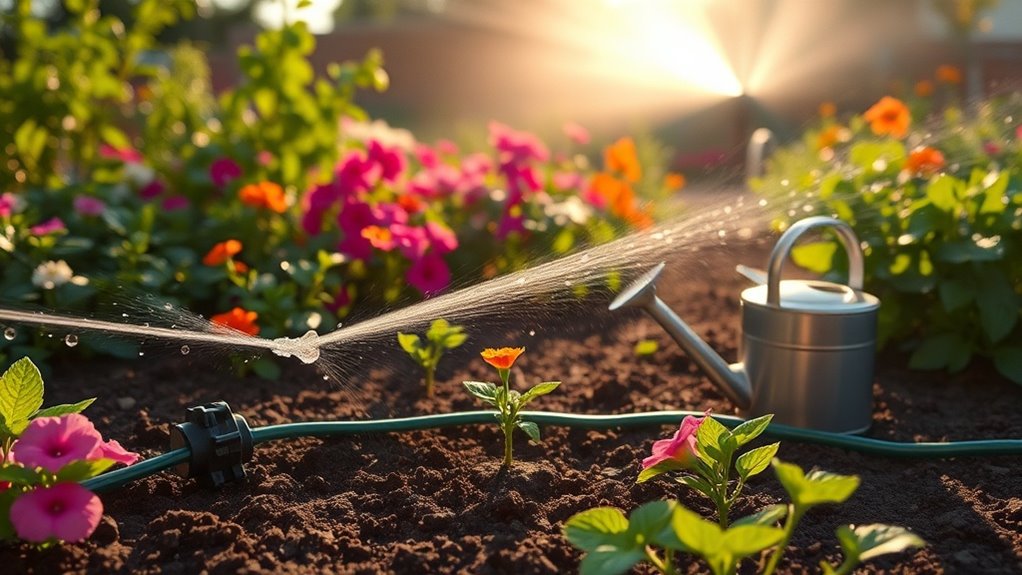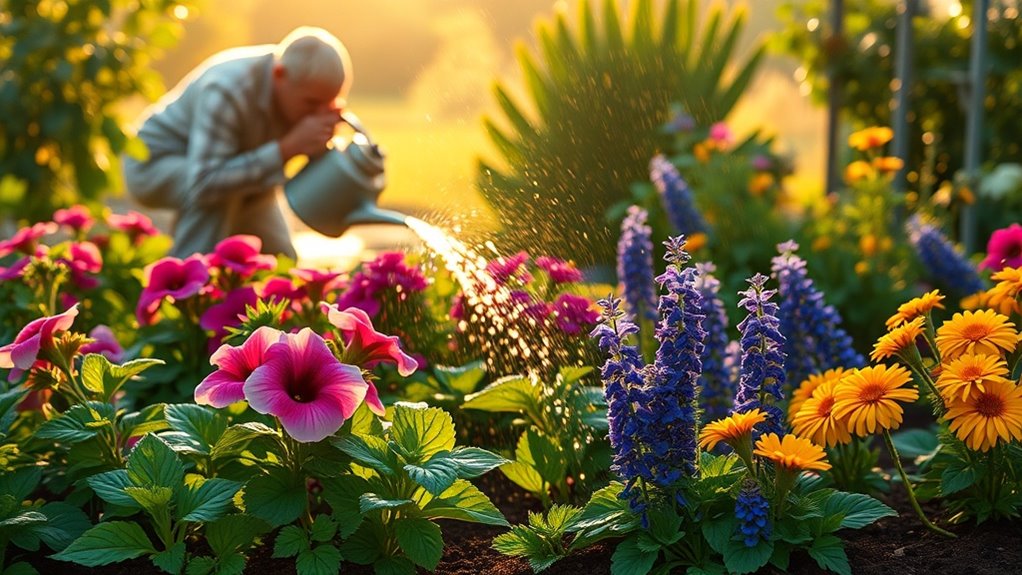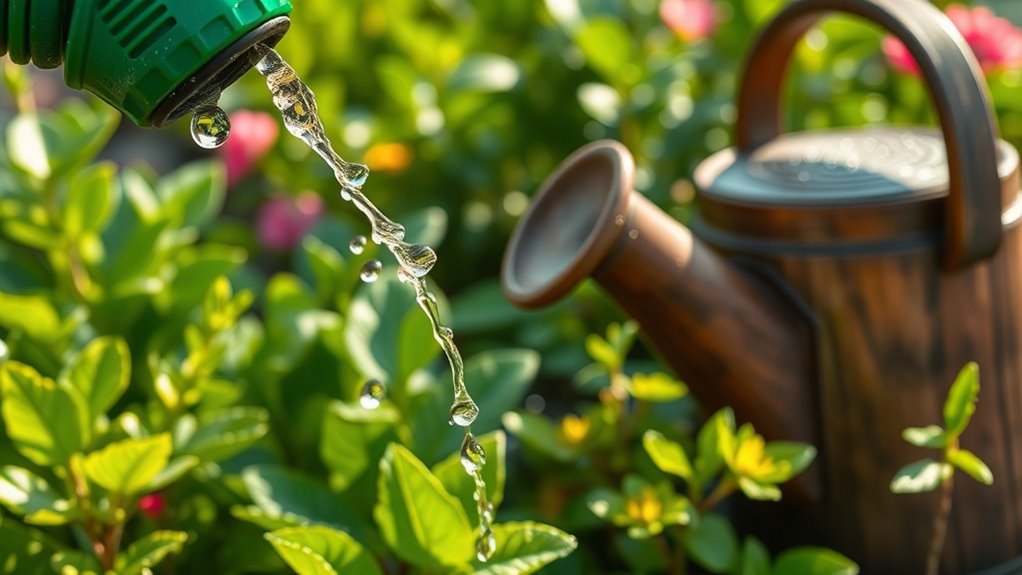You’re Probably Overwatering-Here’s the Fix That Worked for Me
If you’ve noticed your plant leaves turning yellow or developing mushy roots, you may be overwatering. It’s a common issue that can devastate your garden if not addressed. By understanding the specific watering needs of each plant and improving soil drainage, you can turn things around. I found a method that significantly improved my plants’ health, and it might just work for you too. Let’s explore how to tackle this problem effectively.
Recognizing the Signs of Overwatering
Overwatering can wreak havoc on your plants, and recognizing its signs early is crucial for their health.
Yellowing leaves, mushy roots, and a musty odor signal distress. If you notice these symptoms, it’s key to act promptly.
To implement an overwatering fix, reduce watering frequency and improve drainage. This helps restore balance and ensures your plants thrive once again. Additionally, understanding the effects of overwatering can guide you in making more informed watering decisions.
Understanding the Watering Needs of Different Plants
Different plants have varying watering needs based on their type, size, and environmental conditions. Succulents, for instance, thrive on minimal water, while tropical plants require consistent moisture. Consider factors like growth stage and season—young plants often need more water than mature ones. Tailoring your watering regimen to each plant’s specific needs prevents overwatering and promotes healthy growth. Additionally, understanding plant hydration is crucial to maintaining a thriving garden ecosystem.
Assessing Your Soil and Drainage
To effectively manage your plant’s water intake, it’s crucial to assess your soil and drainage conditions.
Check for compacted soil or poor drainage by digging lightly around the roots. If water pools or drains slowly, consider amending your soil with organic matter to improve aeration. Additionally, universal soil prep methods can enhance overall soil structure and health, making it easier for plants to thrive. Also, ensure pots have drainage holes to prevent waterlogging, which can lead to root rot.
Implementing a Watering Schedule
Once you’ve evaluated your soil and drainage, it’s time to create a watering schedule tailored to your plants’ needs.
Follow these steps:
-
Assess plant types: Understand the specific water requirements of your plants.
-
Check weather conditions: Adjust your schedule based on rainfall and temperature.
-
Set a routine: Water in the early morning or late afternoon for optimal absorption. Additionally, it’s important to implement essential heat-proof watering tips to help your plants thrive during scorching weather.
Alternative Techniques to Watering
While traditional watering methods are effective, exploring alternative techniques can enhance your watering routine and reduce the likelihood of overwatering. Consider the following options:
| Technique | Description |
|---|---|
| Bottom Watering | Water plants from below to promote root absorption. |
| Drip Irrigation | Use a slow, targeted water supply directly to roots. |
| Self-Watering Pots | Utilize pots with reservoirs for consistent moisture levels. |
In addition to these techniques, understanding watering timing strategies can help further optimize your garden’s health and water usage.
Monitoring Your Plants’ Recovery
As you implement changes to your watering routine, closely monitoring your plants’ recovery is essential for ensuring their health and vitality.
Focus on these key indicators:
- Leaf Condition: Check for yellowing or wilting leaves.
- Soil Moisture: Use a moisture meter to assess soil dampness.
- New Growth: Observe for new leaves or shoots emerging.
These signals will guide your adjustments and enhance plant recovery.

